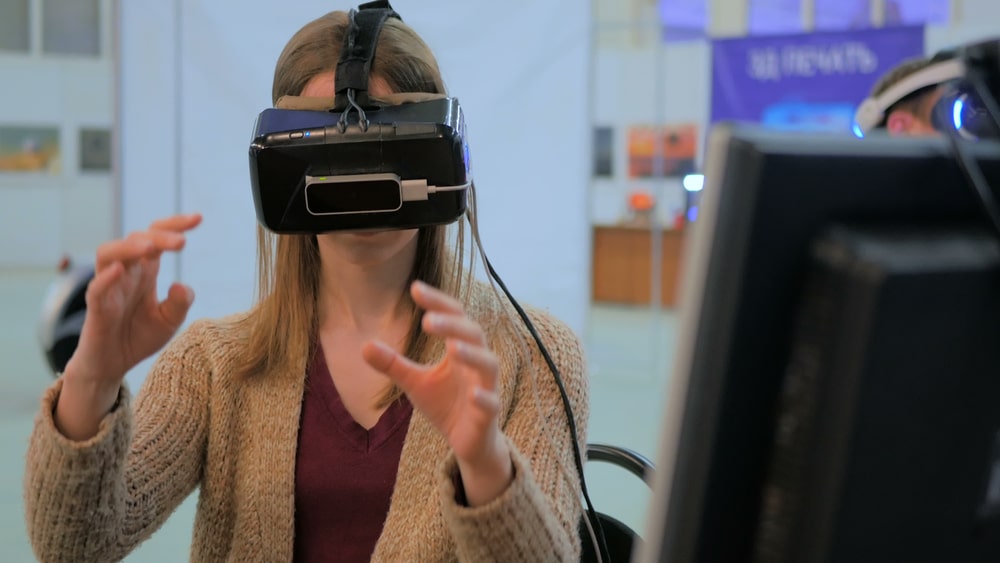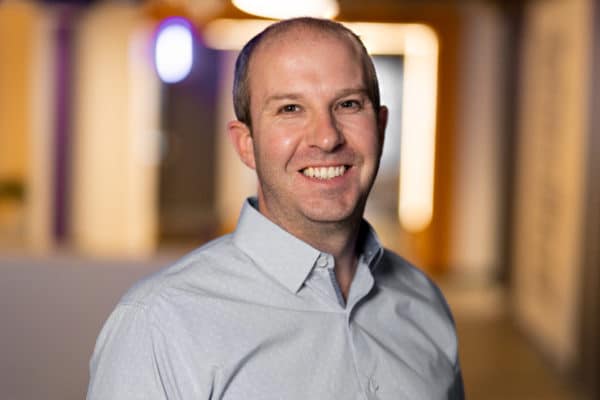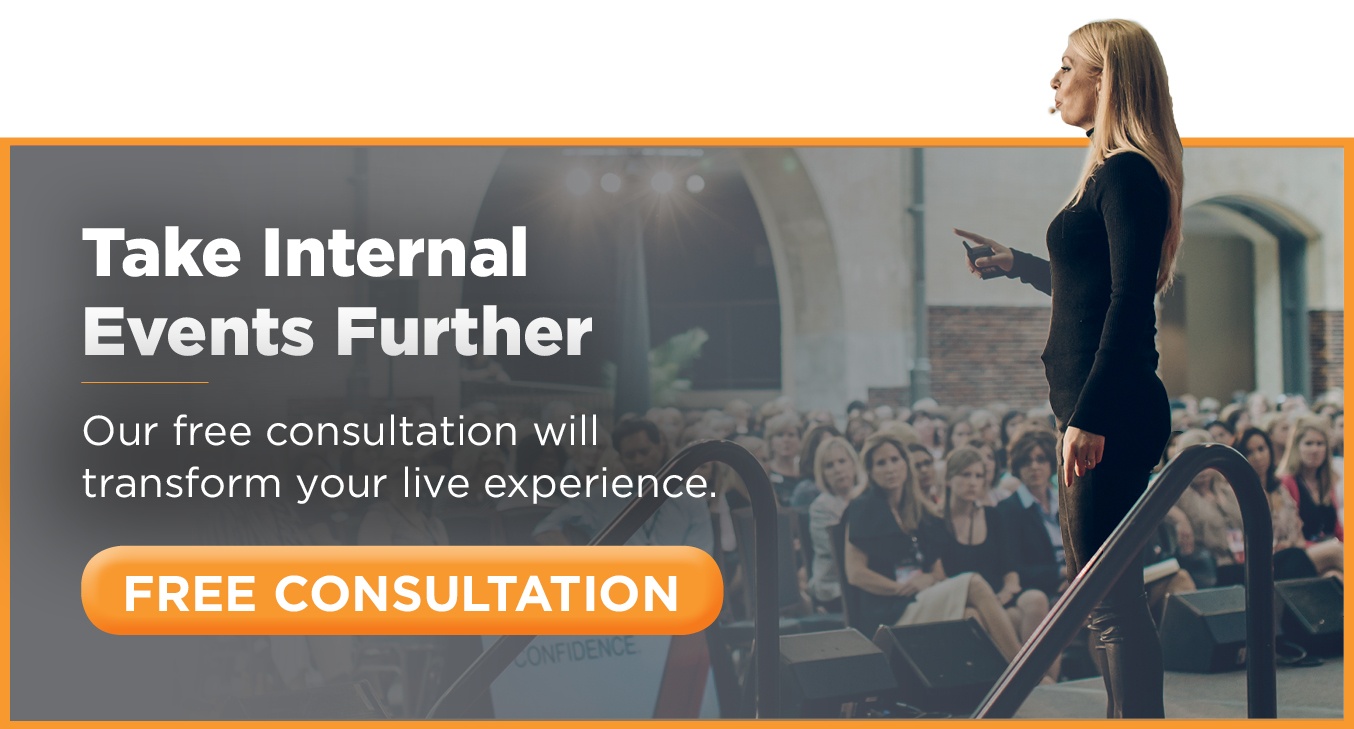Augmented and virtual reality are changing the ways businesses approach experiential.
But while it is always tempting to use the latest and greatest of the tech world, the purpose behind it remains paramount. You can’t just design a VR/AR platform for the sake of using the technology, you need to inspire an emotional connection with your brand.
So argues Scott Clarke, CPG’s Creative Strategist and AR/VR expert. In this very special article, Scott discusses what makes virtual and augmented reality so powerful for companies around the world, along with the dos and don’ts adding it into your own mix.
I’ve heard people around the office refer to you as an AR/VR expert. Can you tell me more about your AR/VR background and its relevance to corporate event production?
To truly understand something, you need to love it. I’m personally a huge fan of VR/AR technologies. They captured my imagination when I was young even though they fell short on their promise. The technology has finally come of age and I’ve been a huge proponent of them because of what they can do: immerse people.
I’ve transported people to other places in narrative and documentary styles, flown them over cities and into tombs. Into a future of space travel and into the past, even aboard the Wright flyer in 1903. I’ve helped the parents of soldiers better understand why their sons and daughters would enlist by creating an experience hand-in-hand with veterans so that others can take their place inside a HMMWV on a mission downrange. Most importantly, I’ve put people in Rosa Park’s shoes on the day of her defiance, confronting racism and seeing through her eyes.
Experience changes the way we think, it informs the way we feel. And that is the first thing you have to learn: it’s not about the technology. At all. It’s about the experience you have inside it. XR is an incredibly effective experience platform.
The reason corporations have events in the first place is their innate belief in communal experience, that experience is inherently powerful or thought-provoking. If they honestly didn’t think the experience of an event was going to work, they wouldn’t do it.

Events are expensive. Companies spend millions upon millions to get their employees to buy into a common vision, or their users to better understand certain key principles. AR/VR can be an important component in the experience arsenal, but only when done well. Companies want every arrow in their quiver used in creating belief through experience but they don’t always know how.
That is where we come in.
What got you started in Augmented & Virtual Reality in the first place?
As I said, I’ve been a fan since the last time VR came around. I had a VR headset that connected into my Super Nintendo. At the time it felt like the future, but we were also well aware of the limitations. It was akin to watching a tiny screen in the distance in a pitch black room.
While ultimately disappointing, the technology of the early 90s still captured my imagination. “What if” swirled in my head. When VR came around this time, I was one of the first in line to try the Oculus development kit 1. I knew that we’d finally reached a sweet spot between hardware and software to do really amazing things and the “what ifs” that lingered in my brain came back to the forefront.
I was helping do creative direction and strategy for a brand experience company and helped them develop their plan for the technology and started to formulate best use cases.
When I realized the opportunity was even bigger, I co-founded a startup that was dedicated to creating powerful experiences in the AR/VR space. Our mandate was to basically do the opposite of what everyone else was doing. We didn’t want to make video games or movie tie-ins, but powerful experiences that would change people’s hearts and minds.
What’s something you’re most excited to see develop in the AR/VR space?
All of the technology I’m excited to see developed in augmented and virtual reality is directly related to the experience people will have with it. Technology is only a means to an end, in this case, a more fully immersed experience. That said, an untethered (read: wireless) and boundless (read: no defined, set space) AR/VR experience, in my opinion, is the holy grail.
Being able to dynamically move around any physical space and have it correspond with the virtual will give people complete and total immersion. When you have restrictions on space, you restrict experience. Allowing people to freely and confidently explore lets them more fully commit to the experience they are having.
From there, I’m most excited to see master filmmakers get involved in the space. Emotional storytelling is still lagging. We’ve proven it can work and that it is more effective than any other platform for immersive storytelling.
What, in your opinion, is the most effective way to use AR at corporate events?
Before I answer that, I have to ask the most basic of questions- Why? Why do you want to use AR? What is the purpose? It depends on the key messages and story that people want to share at their events.
The truth is, AR might not be right for your event. And that is okay. It is a flashy technology, but I’d never suggest flashy technology for flashy technologies sake. There needs to be a purpose behind it. A compelling reason. What could the immersiveness of AR add to your experience that regular video or a touchscreen experience couldn’t?
Figuring that out, in my opinion, is the very first step to figuring out what the most effective way to use AR at any event. The technology is so much more than “because it’s cool.” (But, let’s be honest, it is pretty cool.)

Where does VR fit into the event space?
People come to events with the expectation that something should happen. We live in an experience economy and people want to be engaged. Virtual reality has some pretty amazing capabilities couched in some unique parameters.
First of all, scalability is an issue. If you have 6,000 people in a general session, VR is probably not the right platform to engage with people at that moment due to complexity and hardware requirements. (Though if the reason for using it is compelling enough, absolutely).
A more intimate gathering up to several hundred people? Now we’re talking.
VR has an incredible ability to disconnect people from their current space and time and transport them wherever you want, real or imagined. This strength is well utilized in an expo or trade-show type environment, where people are constantly distracted. Themed parties present another opportunity for people to engage in with this technology.
If the story is right, and the reasoning sound, VR can pop up anywhere from the main session through any breakouts and after parties. It can be a communal experience or individualized for each participant on their own time.
What’s something lots of companies are doing wrong with AR/VR?
Including augmented and virtual reality just because it’s shiny. Because it’s a buzzword. The tech provides a platform for so much more. Including it just to include it ups the noise to signal ratio and shows how unconsidered the messaging really is.
Quit thinking in terms of VR/AR/XR and start thinking in terms of experience.
Sticking someone on stage wearing a VR headset and waving magic VR wands around doesn’t really cut it. A branded VR Rollercoaster isn’t going to move the needle for people on what you’re trying to get them to internalize and believe. Quit checking boxes, honestly consider your message, and immerse people in your story.
Including and augmented or virtual reality experience because you’re “supposed to” is a tell-tale sign you’re going down the wrong path.
Something they’re doing right?
Talking to the person who is wearing the VR headset, not just about how cool the VR headset is. Sharing with people experiences that they couldn’t have any other way. This tech can take you anywhere, anytime, with anyone. That is an awesome responsibility. No boilerplate experience is going to live up to that. You want people thinking about that experience again and again.
The experience people have inside VR is as real as any other experience they have. It isn’t processed as some dream state, but real visual and auditory stimuli coupled with the actual emotions they experience inside. This is more powerful than most people realize!
When those memories are taken from short-term into long-term memory, they are stored as first-person experiences. When companies treat VR as an immersive content delivery system instead of a piece of technology, they are on the right track.
Do you have a favorite example of a business successfully using AR/VR at an experiential event and not seeming out-of-touch or “flashy”?
All of my favorite experiences can be boiled down to a single question: What is the heart of the story? Therein lies the nugget of truth that the brand wants you to experience. It needs to be simple and also profound.
Automotive industries obviously have a pretty easy time figuring out what to do in VR and so it is especially fun when they get creative.
Audi had a phenomenal “sandbox” virtuality reality experience where they had a physical sandbox that you could actually move objects and sand in, creating your own dream playground for some toy-scale Audi cars. Then, you hop into virtual reality and you’re magically transported to the place you just created and you get to drive around the sand dunes, giant size shovels, pails, and sand castles.
Check out the making of it here:
The first part is tactile and experiential, the second is a payoff of childlike play. To them, the story is the joy of driving. How driving can be as fun as play was as a child. For serious drivers, drivers passionate about driving, Audi is your brand. It is so simple and elemental and the technology here is secondary to the experience. It facilitates the experience, it isn’t the experience itself.
Merrell was doing an event for a new shoe they were bringing to market, what they called their most “high tech” hiking shoe. A static product sitting lifelessly on a pedestal couldn’t capture the story of that shoe in the slightest. These shoes were to be used by the best to go places most don’t.
How do you communicate that? They created a VR experience that motion tracked people inside a VR environment matched with a physical environment, a hike through a treacherous mountain pass and over a rickety bridge.
You can watch Merrell’s video recap here:
Obviously fear and anxiety were powerful emotions throughout, but what really sold me on this experience was the heart of what they were saying: It’s not about the shoes, it’s what you can do with them. It’s where you can go with them! Giving people the opportunity to actually DO something here is genius and creates a powerful connection between them and the message, the reason the product exists.
Kaiser Permanente created an exhibit and traveling VR experience around the heart of their mission: Total health.
Instead of creating a video with a bunch of executives or doctors pontificating on what that means, they went to the streets of Baltimore and identified people who exemplified their message, people from all walks of life and from many different communities.
Producers used 360 video embedded in an interactive map that allowed people to explore Baltimore from the air and come face to face with the people and places where “total health” was happening. They brought people, through VR, into alleyways as a formerly homeless man talked about sleeping there before getting his life together. Then they ventured into a coffee shop where troubled youth are given the opportunity to get on the job training and other neighborhoods with many diverse people.
It wasn’t a polished brand video with happy, shining models, but it also wasn’t exploitative. It was an emotional reflection of a city and a people trying to do better. It is Kaiser Permanente’s brand story playing out in the real world with no filter.
When you give people experiences that they can’t have any other way or any place else, they will remember. When you allow them to feel real emotions without manipulating them, they will connect the dots themselves. And if you point them in the right direction, they will act. They will become brand evangelists because of these powerful experiences.
How can businesses reduce the cost of AR/VR? What are some areas that make it more or less expensive?
There is, obviously, some baseline expense when it comes to building, filming, coding, etc. That’s true of any creative endeavor. Despite this, costs can be mitigated in several ways.
First, working with a creative team and some budget parameters allows the experts to help you identify the most critical components of your experience. When you start with the story, everything can work on economies of scale within reason.
Next, most people have cell phones or tablet devices that can run an augmented or virtual experience, so if you build with that in mind you can save money on hardware installations, rentals, or expenditures Google Cardboard experiences can be very impressive when the content is good.
Then take a look at reusability. How can this experience live on past this one event and become more cost-effective for you? How can it be evergreen, updatable, etc? What other events can this travel to, where can it live at the home office? Can it be useful for other departments who can share in the cost of production? What is the viability of releasing the experience in an app store, on the web, or a version on Youtube or Facebook using 360 video?
Finally, if you’re producing this for a large event with an expo or trade-show component, find some partners who’d love to co-brand the experience or showcase it near their booth. They are paying to get in front of your customers already and connecting with your brand can be a powerful thing for them. Having a line of people next to their booth or kiosk is something many would pay more for.
So it’s possible to get creative with pricing through several of these methods. If AR/VR is right for the story, it’s worth figuring it out to deliver a valuable experience to your audience.
You talk a lot about storytelling through AR/VR. What are some ways businesses can use AR/VR to tell their brand story?
I do talk a lot about it! It’s the good stuff!
AR/VR is about experience. In my examples, I talked about brands that got it right by simplifying their brand story into a feeling. Creating a story or experience that evokes that same feeling is totally possible, you can succeed at that. Trying to convert a “brand promise” or carefully wordsmithed tagline won’t.
Simmer it all down and see what’s left. Reduce, simplify. Get to the heart of it. Then, leap to outcomes.
What’s the one thing you want your customers to know, to feel, to believe? What do you want this expeirence to actually achieve? Start there and work backwards to connect to the emotional core of your story.
The principles of a good story haven’t changed for this new platform, just some of the methods.
And come talk to us, give me a call. (Seriously- 801-995-3460) We can help you ideate and create something impactful. Something that works for augmented and virtual reality. Belief creating, action-inducing experiences are what CPG has been about for 30+ years and the reason I joined the team.
There is a core, foundational belief here that experiential moments can be changed into powerful movements. I’m obviously pretty passionate about AR/VR for experiential storytelling and I’ve “been there and done that” when it comes to creating for this technology.



